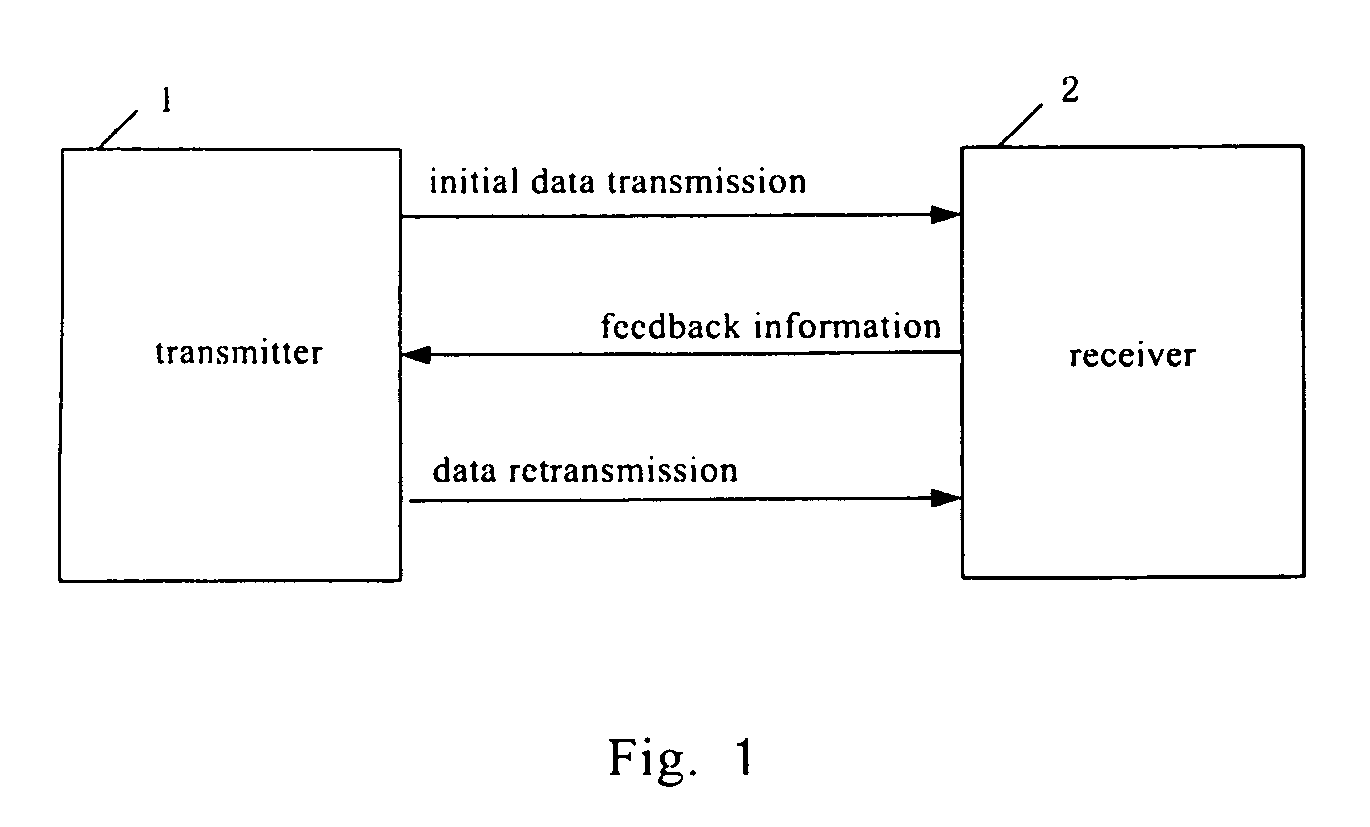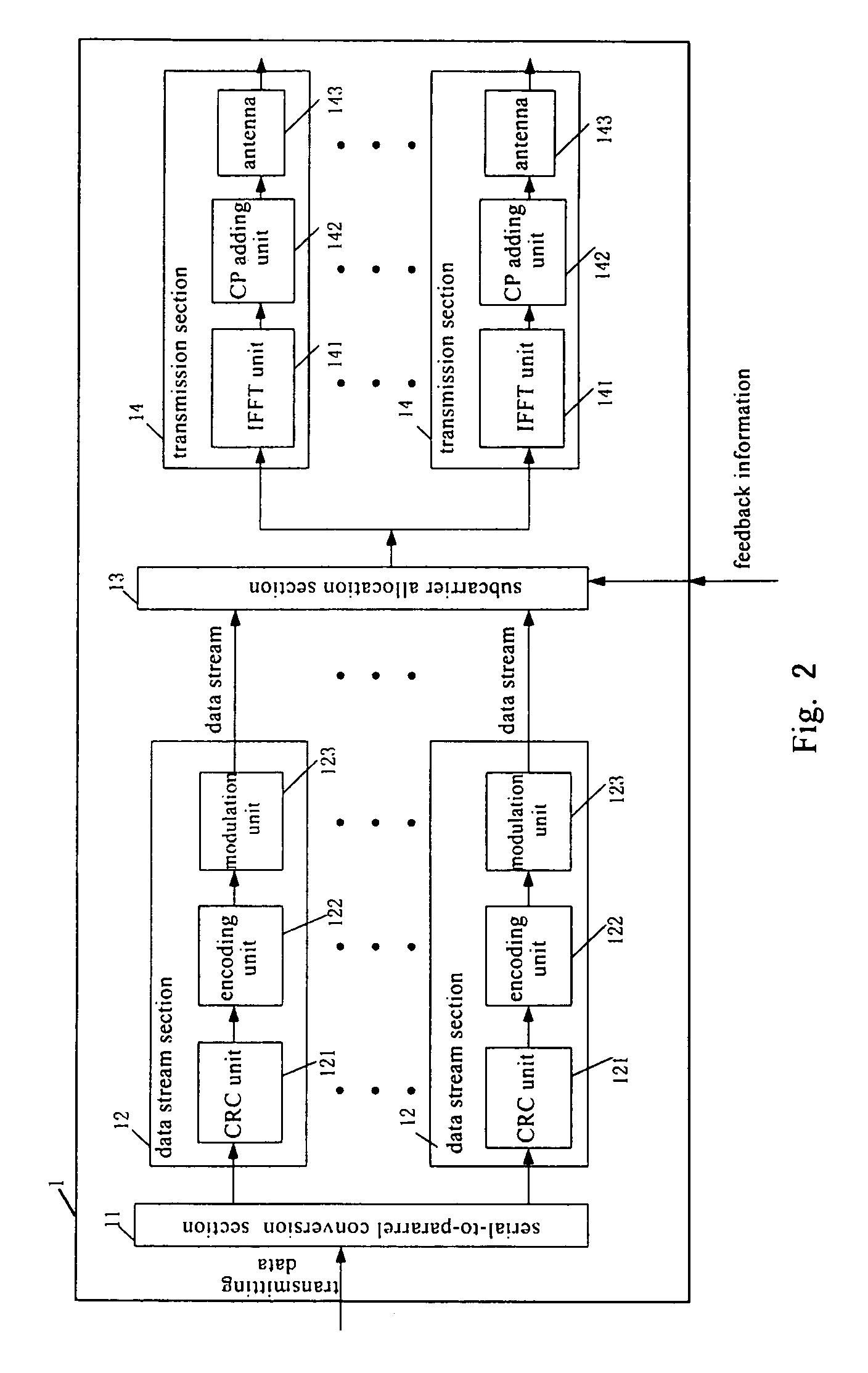HARQ method and system
a communication method and system technology, applied in the field of communication methods and systems, can solve the problems of increasing round-trip delay, affecting the quality of real-time services, and significant time diversity gain
- Summary
- Abstract
- Description
- Claims
- Application Information
AI Technical Summary
Benefits of technology
Problems solved by technology
Method used
Image
Examples
second embodiment
The Second Embodiment
[0099]The architectures of the transmitter 1 and the receiver 2 in the second embodiment according to the present invention are the same with those shown in FIGS. 2, 3, 4 and 5.
[0100]The difference is in that the subcarrier allocation table making unit 233 allocates the subcarriers by groups.
[0101]FIG. 7(a) an example of the subcarrier allocation table updated by the subcarrier allocation table making unit in the receiver 2 and fed back to transmitter 1 according to the second embodiment of the present invention. FIG. 7(b) is a function diagram showing the equivalent channel gain referred by the subcarrier allocation table making unit when making the subcarrier allocation table.
[0102]Suppose that the system has transmit antenna 1 and 2 and can use 8 subcarriers to transmit data. In the present embodiment, the subcarrier allocation table making unit 233 classifies the 4 neighbouring subcarriers of the transmit antenna as a group.
[0103]As shown in FIG. 7(b), the s...
modified embodiment
[0107]It is to be noted that in the above embodiments, the prestored subcarrier allocation table in transmitter 1 and the receiver 2 indicates that the same antenna transmits the L subcarriers converted from one data stream. However, the prestored subcarrier allocation table can also be an experienced subcarrier allocation table obtained by the system, which is the subcarrier allocation table corresponding to the best performance achieved during the procedure of data transmission and it may indicate that the L subcarriers converted from one data stream are transmitted by different antennas.
[0108]In addition, if every data stream is correctly received during a data transmission (initial transmission or retransmission) procedure, the transmitter 1 can continue to use the subcarrier allocation table used in the data transmission for new data and can also use the prestored subcarrier allocation table for new data.
[0109]And the procedure of calculating subcarrier equivalent channel gain ...
PUM
 Login to View More
Login to View More Abstract
Description
Claims
Application Information
 Login to View More
Login to View More - R&D
- Intellectual Property
- Life Sciences
- Materials
- Tech Scout
- Unparalleled Data Quality
- Higher Quality Content
- 60% Fewer Hallucinations
Browse by: Latest US Patents, China's latest patents, Technical Efficacy Thesaurus, Application Domain, Technology Topic, Popular Technical Reports.
© 2025 PatSnap. All rights reserved.Legal|Privacy policy|Modern Slavery Act Transparency Statement|Sitemap|About US| Contact US: help@patsnap.com



